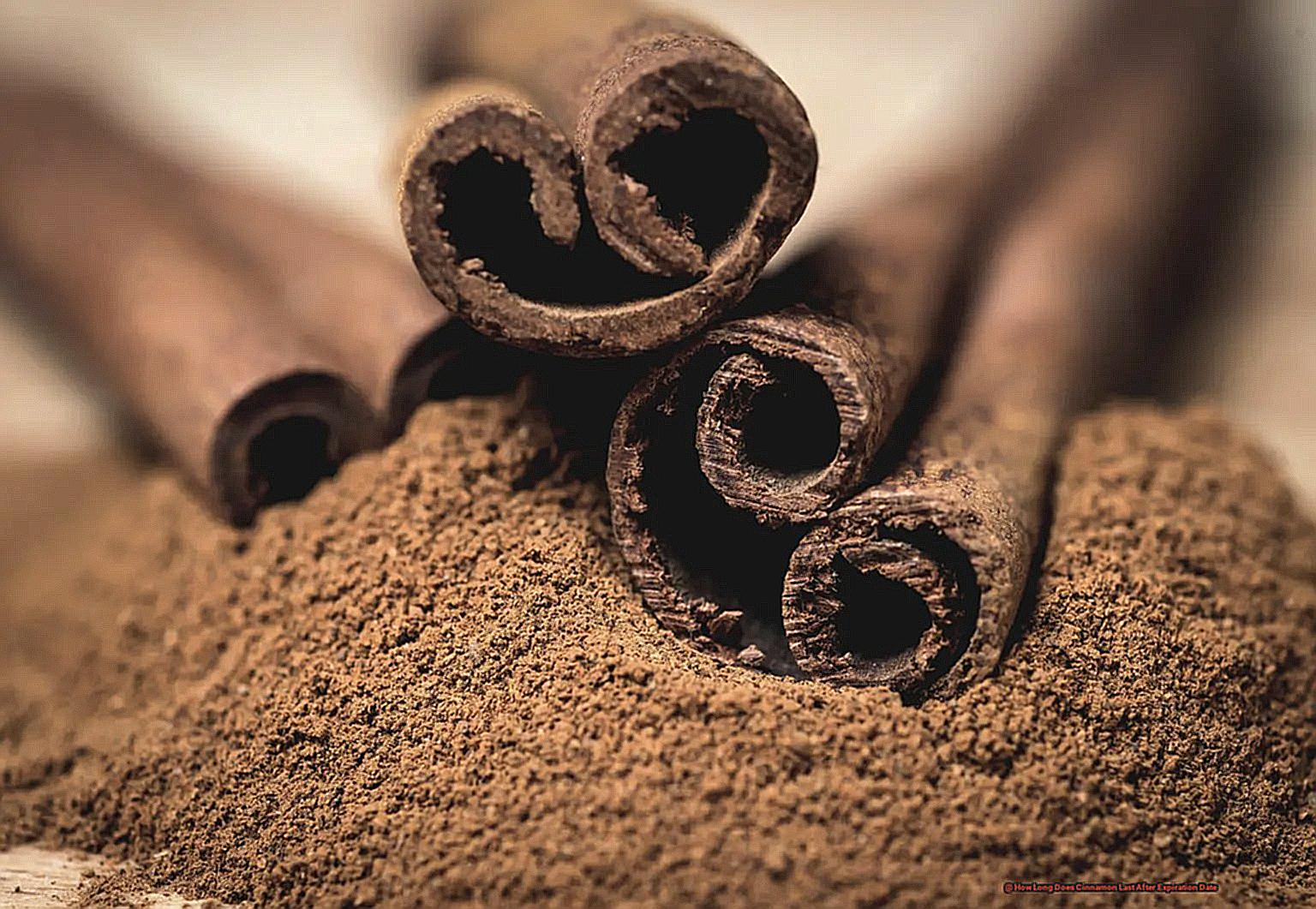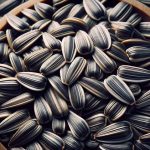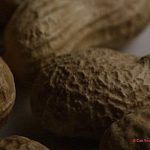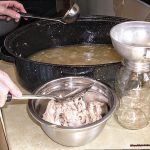The sweet and spicy delight that has been a staple in kitchens for centuries. Its warm and comforting aroma is enough to make any mouth water, and its versatility in cooking and baking knows no bounds. But amidst all the deliciousness, have you ever stopped to wonder about the shelf life of this beloved spice? What happens when it reaches its expiration date? Let’s take a journey into the world of cinnamon and uncover the truth behind its shelf life.
Cinnamon is not just any ordinary spice. It boasts a high concentration of essential oils, giving it a longer shelf life compared to other herbs and spices. However, like most food products, it does come with an expiration date. But fear not, dear reader, for this date is more of a guideline than a strict rule.
Proper storage is key when it comes to extending the lifespan of cinnamon. By keeping it in an airtight container in a cool and dry place, you can prolong its shelf life by up to 2-3 years. That means more time to enjoy those delectable cinnamon-infused treats.
But what happens after its expiration date? Will your dishes be ruined if you use expired cinnamon? The answer may surprise you. While it may lose some flavor and potency, expired cinnamon is still safe to consume. So go ahead and sprinkle some on your oatmeal or mix it into your cookies without worry.
However, it’s worth noting that ground cinnamon typically has a shorter shelf life compared to whole cinnamon sticks. So if you’re looking for longevity, opt for the whole sticks instead.
Now that we’ve uncovered the truth about cinnamon’s shelf life, you may be wondering – should I toss out that expired bottle of ground cinnamon sitting in my pantry? But one thing’s for sure – with proper storage and usage guidelines in mind, you can continue enjoying this beloved spice for years to come.
Contents
Does Cinnamon Go Bad Over Time?
It is rare, but it can happen if not stored correctly. Here are some indicators that your cinnamon may have spoiled:

- Loss of Fragrance: Cinnamon is renowned for its distinctive and potent fragrance. If your cinnamon no longer has its signature scent, it could be a sign of spoilage.
- Growth of Mold: Seeing fuzzy molds on your cinnamon sticks or ground cinnamon is a clear indication that it has gone bad. Do not use it and dispose of it properly to avoid foodborne illnesses.
- Change in Color: Cinnamon should have a reddish-brown hue. If it turns gray or black, it may have gone bad.
- Presence of Pests: Pantry bugs or insects can infest and contaminate your cinnamon, making it unsafe for consumption.
If you notice any of these warning signs, it’s best to discard the cinnamon and purchase a fresh batch.
Proper storage is crucial in extending the shelf life of cinnamon. Here are some tips on how to properly store cinnamon to maintain its freshness:
| Use an Airtight Container | Cinnamon should be stored in an airtight container to prevent moisture and humidity from seeping in. |
| Keep Away from Heat and Light | Heat and light can accelerate the degradation process of cinnamon. Store it in a cool, dark place like your pantry or cupboard. |
| Use a Dry Spoon | When using ground cinnamon, make sure to use a dry spoon to avoid introducing moisture into the container. |
| Grind Only What You Need | To maintain the potency and flavor of ground cinnamon, grind only what you need for immediate use. |
If stored properly, cinnamon can last for a long time, even after its expiration date. However, to ensure its quality and flavor, it’s best to use it within the recommended shelf life mentioned earlier.
In conclusion, cinnamon can spoil over time if not stored properly. Keep it in an airtight container, away from heat and light, and use a dry spoon when handling it. If you notice any signs of spoilage, it’s best to discard it and purchase a fresh batch. Remember to always check the expiration date and opt for alternatives like nutmeg, allspice, and cloves if needed.
How Can You Tell If Cinnamon Has Gone Bad?
Cinnamon is a widely used spice in various cuisines and beverages, prized for its distinct fragrance and taste. However, like any other consumable item, cinnamon can spoil with time. To ensure the freshness and safety of your cinnamon, it is crucial to know how to identify if it has gone bad and what signs to watch out for.
- Loss of Aroma and Flavor: The most apparent indication that your cinnamon has turned bad is when it loses its signature aroma and flavor. As spices age, their essential oils evaporate, causing them to lose their potency. If your cinnamon no longer has the same potent smell or taste, it may be time to replace it.
- Musty Smell: Another red flag of spoilage is a musty smell. This can occur when moisture seeps into the container and causes mold to grow on the cinnamon. If your cinnamon emits a musty or unpleasant odor, it is best to discard it.
- Discoloration or Clumping: Cinnamon should have a deep reddish-brown hue with a fine texture. If you notice any changes in color or clumping in your cinnamon, it could be a sign of spoilage.
- Presence of Pests: Improper storage of cinnamon can attract pantry bugs like weevils or moths. If you spot any dead or moving insects in your cinnamon, it is safest to dispose of it and thoroughly clean the storage container.
- Wet Spots or Mold: Exposure to moisture can cause wet spots or mold growth on the surface of cinnamon. In such cases, consuming it can be hazardous, and it should be discarded immediately.
- Strange Taste or Appearance: Trust your senses when determining whether your cinnamon has gone bad. If it looks or tastes different from its usual appearance and flavor, it’s better to err on the side of caution and get a fresh batch.
In conclusion, if you notice any of these signs in your cinnamon, it is best to dispose of it and get a new container.
How To Properly Store Cinnamon?
Cinnamon is a versatile spice that adds flavor and aroma to various dishes, and its proper storage is crucial in maintaining its potency and freshness. To ensure your cinnamon stays fresh and safe to use even after its expiration date, follow these helpful tips:
| Storage Method | Shelf Life | Notes |
| Room Temperature | 2-3 Years (Cinnamon Sticks) 1-2 Years (Ground Cinnamon) |
– Store in tightly sealed containers away from heat and light sources – Avoid storing near the stove or other sources of heat – Keep away from moisture – Regularly check for signs of mold or pantry bugs |
| Refrigerator | 4 Years (Cinnamon Sticks) 3 Years (Ground Cinnamon) |
– Place in an airtight container or freezer bag before refrigerating – Allow cinnamon to reach room temperature before using to prevent moisture buildup |
| Freezer | Indefinitely | – Place in an airtight container or freezer bag before freezing – Allow cinnamon to come to room temperature before using to avoid moisture buildup – Can be used straight from the freezer without thawing for up to 2 years |
It should be noted that while cinnamon does not technically expire, it can lose potency over time. This may result in a less intense flavor and aroma, but it does not necessarily mean the cinnamon has gone bad. As long as there are no signs of mold or moisture, slightly old cinnamon is still safe to use according to the USDA’s “best by” date guidelines.
If you happen to come across expired ground cinnamon, do not discard it as it can still be revived. Simply heat the spice in a skillet to unlock its flavorful and fragrant properties. Alternatively, old ground cinnamon can also be repurposed for other uses such as potpourri or in homemade cleaning products.
In conclusion, proper storage is key in keeping your cinnamon fresh and safe to use even after its expiration date. By following these tips and regularly checking for signs of mold or pantry bugs, you can continue to enjoy the sweet and aromatic flavor of cinnamon in your dishes for years to come.
Does Cinnamon Go Bad After Opening?
The longevity of cinnamon once it has been opened differs depending on the variety of cinnamon and how it is stored.
Varieties of Cinnamon:
- Ceylon cinnamon, also known as “true” cinnamon, has a more delicate flavor and is less intense than other types. It is the preferred type for sweet dishes and beverages.
- Cassia cinnamon, also known as Chinese cinnamon, is more commonly used in cooking and has a stronger and spicier flavor than Ceylon cinnamon.
- Saigon cinnamon, also known as Vietnamese cinnamon, is the most potent type of cinnamon with a sweet and spicy flavor.
Shelf Life of Cinnamon:
- Whole cinnamon sticks can last up to 4 years if kept in an airtight container in a cool, dry place away from light and heat.
- Ground cinnamon can last up to 2-4 years if stored in an airtight container in a cool, dry place away from light and heat.
- Cinnamon extract has a shelf life of 4 years if properly stored in a cool, dry place.
Storing Cinnamon After Opening:
- Room temperature storage: If you intend to use your cinnamon regularly, it can be kept at room temperature in an airtight container away from moisture and heat. This will maintain its freshness for approximately 6 months to a year.
- Refrigerator storage: If you live in a hot and humid climate or do not use your cinnamon frequently, storing it in the refrigerator can help prolong its shelf life for up to 1-2 years.
- Freezer storage: For long-term storage, you can freeze your cinnamon for up to 4 years. Place it in an airtight container or wrap it tightly in plastic wrap before placing it in the freezer.
Indicators of Spoilage:
Cinnamon rarely spoils if stored correctly, but there are some signs to watch out for:
- Loss of aroma: If your cinnamon has lost its strong aroma, it may have gone bad and is likely past its shelf life.
- Presence of molds: If you see any signs of mold growth on your cinnamon, it is no longer safe to consume.
In summary, the shelf life of cinnamon after opening can range from 6 months to 4 years depending on the variety of cinnamon and storage method. Properly storing your cinnamon in a cool, dry place away from light and heat can help maintain its freshness and potency for a longer period. Even after the expiration date on the package, if stored correctly, it can still be safe for consumption. This goes to show that taking care of your ingredients is crucial in ensuring the quality and flavor of your dishes.
Did you know that I once made a mistake of storing my cinnamon in a humid cabinet? I didn’t think much of it until I noticed a loss of aroma and some mold growth on my cinnamon sticks. It was a disappointing experience, especially considering how much I love using cinnamon in my cooking and baking.
Can You Get Sick From Old Cinnamon?
Consuming outdated cinnamon may not make you ill, but it can lead to a less enjoyable cooking experience due to the loss of flavour and aroma. The shelf life of cinnamon depends on its type and storage conditions, with whole cinnamon sticks lasting longer than ground powder. While ingesting outdated cinnamon may not pose any harm, it is recommended to prioritize using fresh cinnamon for maximum health benefits. Furthermore, consuming moldy or contaminated cinnamon can result in health complications such as allergies or respiratory issues. Hence, it is crucial to properly store and regularly inspect your cinnamon for any signs of spoilage to ensure a safe and delightful culinary experience.
As a professional chef, I have seen firsthand the importance of using fresh ingredients in cooking. Cinnamon, being a widely used spice, is no exception. The quality of the spice greatly affects the taste of the dish, and using outdated cinnamon can significantly impact its flavour profile.
Moreover, consuming moldy or contaminated cinnamon can have adverse effects on one’s health. Moldy cinnamon can cause allergic reactions or respiratory problems, leading to discomfort and potential health risks. As such, it is essential to store cinnamon properly and regularly check for any signs of spoilage.
To ensure that you are using fresh and safe cinnamon, here are some tips:
- Store ground cinnamon in an airtight container in a cool, dry place.
- Whole cinnamon sticks can be stored in an airtight container in the fridge for maximum freshness.
- Check for any signs of mold or discoloration before using.
- When in doubt, err on the side of caution and use fresh cinnamon instead.
While consuming expired cinnamon may not make you sick, it is best to prioritize using fresh spices for maximum flavour and health benefits. By properly storing and regularly checking your cinnamon, you can ensure a safe and enjoyable culinary experience. Remember, freshness is key in creating delicious dishes.
Alternatives To Cinnamon
Cinnamon, a beloved spice in various cuisines, is renowned for its sweet and comforting taste. However, there may come a time when you run out of cinnamon or seek an alternative due to allergies or personal preference. Fortunately, there are several substitutes for cinnamon that can still impart a similar flavor and aroma to your dishes.
- Allspice – Derived from the dried berries of the Pimenta dioica tree, allspice boasts a warm and piquant flavor akin to cinnamon. It is commonly used in Caribbean and Middle Eastern cuisine and pairs well with meats, stews, and desserts.
- Nutmeg – Another popular spice with a warm and sweet profile, nutmeg originates from the seeds of the evergreen Myristica fragrans tree. It is frequently used in baking and can also be incorporated into savory dishes like soups and curries.
- Cardamom – This spice comes from the seeds of various plants in the ginger family and has a potent, spicy taste with hints of citrus and mint. It is commonly found in Indian and Middle Eastern cooking, especially in sweet dishes and teas.
- Ginger – Recognized for its spicy and slightly sweet flavor, ginger is a versatile spice that can enhance both savory and sweet dishes. It pairs well with meats, vegetables, and desserts.
- Cloves – These dried flower buds possess a potent and pungent taste with subtle notes of sweetness. They are frequently used in baking, curry powders, and marinades.
- Anise – With a licorice-like flavor, anise is a popular baking spice commonly found in cookies and breads. It also adds depth to savory dishes like stews and soups.
- Chinese Five Spice – A blend of five spices (star anise, cloves, cinnamon, fennel seeds, and Szechuan peppercorns), Chinese Five Spice can be used as a substitute for cinnamon in savory dishes and marinades.
- Vanilla – While not technically a spice, vanilla extract or vanilla beans can impart a sweet and warm flavor to desserts and baked goods, making it a suitable alternative to cinnamon.
It is important to keep in mind that these alternatives may not completely replicate cinnamon’s taste, but they can still add richness and warmth to your dishes.
Related Questions
The longevity of cinnamon can be influenced by various factors, such as its form (powder or sticks), storage conditions, and the expiration date on the packaging. When stored correctly, ground cinnamon can last for 1 to 2 years, while cinnamon sticks can remain fresh for 3 to 4 years. However, these time frames should not be treated as strict rules and are only meant to provide a general guideline.
It is essential to note that the expiration date printed on cinnamon packaging is a “best-by” date, rather than an indication of when the spice will spoil. In fact, even after the expiration date has passed, cinnamon can still maintain its potency for a much longer period. This means that consuming cinnamon after its labeled date has expired may still be safe.
One of the critical factors that can impact the shelf life of cinnamon after its expiration date is proper storage. It is recommended to store cinnamon in a cool, dry place, away from heat and moisture. This will help preserve the spice’s flavor and aroma over time. If stored correctly, ground cinnamon can retain its quality for up to 6 months past its expiration date.
To determine if your cinnamon is still fresh, you can conduct a sniff and taste test. If it still has a strong aroma and flavor, it is safe to use in your dishes. However, if the scent is weak or non-existent, it may be time to replace your cinnamon.
Conclusion
In conclusion, cinnamon is a beloved and versatile spice that can add warmth and flavor to a variety of dishes. Its essential oils give it a longer shelf life compared to other herbs and spices, making it a pantry staple for many households. Proper storage is key in extending its lifespan by up to 2-3 years. While an expiration date is provided, it should be viewed more as a guideline rather than a strict rule. Even if your cinnamon has passed its expiration date, it is still safe to consume although it may have slightly diminished flavor and potency.
To ensure your cinnamon stays fresh for as long as possible, make sure to store it in an airtight container in a cool, dark place away from heat and moisture. Regularly check for any signs of spoilage such as mold or an off odor before using. Trust your senses when determining if your cinnamon has gone bad – if it doesn’t smell or taste right, it’s best to discard it.
Remember to also check the “best by” date before using your cinnamon. And don’t be afraid to experiment with this aromatic spice – sprinkle some on your morning oatmeal or mix it into your favorite cookie recipe for a delicious twist. With proper storage and regular checks for spoilage, you can continue enjoying the comforting aroma and flavor of cinnamon in your meals.




